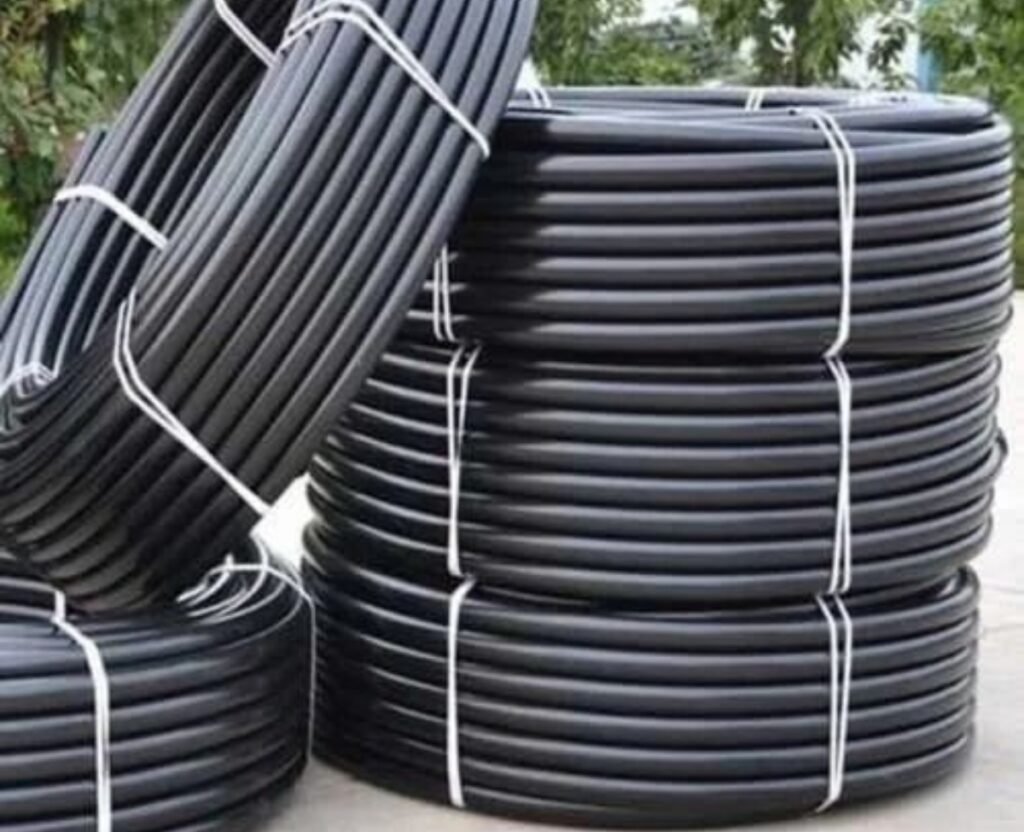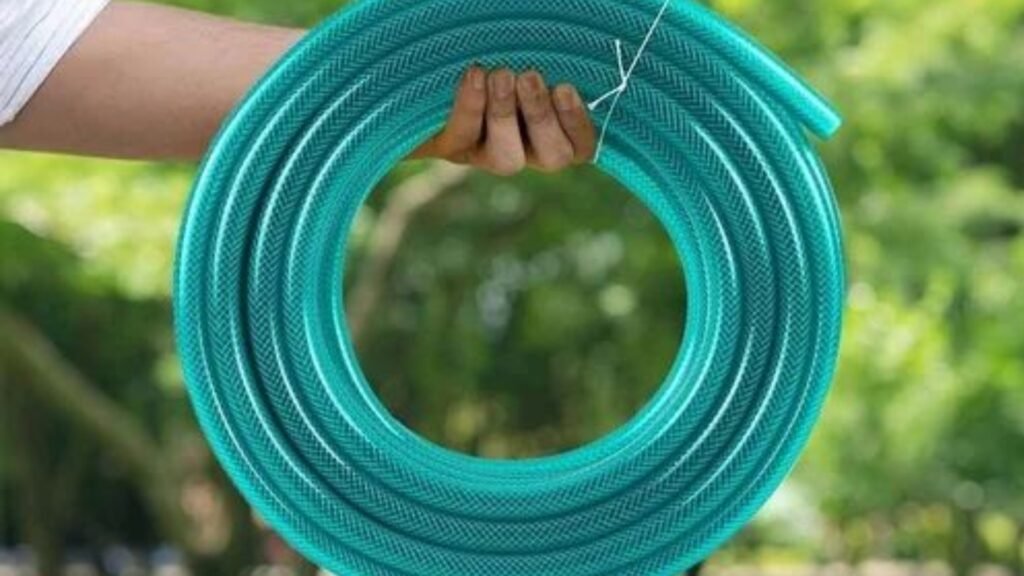Polythene pipes refer to a new piping solution. They consist of a plastic that is very strong, such as polyethylene. This is a chemically resistant thermoplastic that is strong and flexible. Thus, these pipes convey water, gas, and other fluids safely.
Then there is the professional opinion. Researchers point out that polyethylene has a long service life, usually to a period of over 100 years. Its low cost of installation and maintenance is highlighted by the analysts. Its ability to resist leakage is better than that of traditional materials, as attested in previous studies. This also renders it an economical and dependable option to make with regard to critical infrastructure.
Lastly, consider the invisible network. Our lives are supported by an invisible system of pipes. It also provides clean water in our houses. It serves as heating fuel and cooking fuel. This unseen system is in effect to make us feel comfortable and secure without any problem whatsoever.
What is Polythene?
Polyethylene is a thermo-polymer. It is made from ethylene gas. Therefore, the substance is in long molecular chains. Thus, these chains can be made in various densities. However, the process produces different grades with different properties. There are distinguishing features of polyethylene. It is highly durable. Therefore, the material is impact and abrasion-resistant and stress-crack-free. Thus, this provides polyethylene pipes with a high service life. They can withstand extreme circumstances.
The other significant characteristic is flexibility. Polyethylene pipes are easily bent. So, they tolerate abnormalities in the course of installation. This is a feature of flexibility, aiding them to resist ground movements. They are also able to deal with changes in temperature without cracking.
One of its features is chemical resistance. Polyethylene is a noncorrosive material. It is also resistant to the majority of acids, alkali, salts, and solvents. This is why it is appropriate to transport corrosive fluids.
It is also a lightweight material. Polyethylene does not weigh very much compared to steel, iron, and concrete. Thus, this enhances the ease of transportation of the pipes. Installation and handling are easier. All these characteristics qualify polyethylene as a really flexible piping material.

Types of Polythene Piping
Polyethylene piping is available in two types. Therefore, these are the high-density polyethylene (HDPE) and the low-density polyethylene (LDPE). The molecular structure is denoted by its density. Thus, the physical properties of the pipe are influenced by this structure.
High-density polyethylene (HDPE).
HDPE is not complicated in its structure. It has fewer branches. Thus, this increases its density. It gives more strength as well. HDPE pipes can resist pressure as compared to LDPE. They also have a greater temperature rating. HDPE can maintain its integrity to temperatures as high as 120 °C.
HDPE is chemically resistant. It is soluble in the majority of solvents. It is not susceptible to non-oxidizing acids and bases. So, it has low friction, thus good flow characteristics. This is particularly so for gases and abrasive materials. HDPE is ideal in large pressure pipelines due to its large strength-to-density ratio. Therefore, they are city water, gas pipeline, and sewage drainage.
Low-density polyethylene (LDPE).
LDPE is branched and of a high degree. This increases its flexibility. It is less strong than HDPE. LDPE is plastic and thus can be easily installed around obstructions. It has a good impact absorption because of its branched structure. It also does not crack easily when subjected to long stress. LDPE is resistant to acids, bases, salts, alcohols, a nd oils.
The toughness and flexibility of LDPE qualify it for specific applications. It is effective when there should be movement or impact frequently. This features underground water service lines. Tubing in instrumentation is also performed using it. In high-pressure usages, HDPE is recommended. Where flexibility is required, LDPE is a better choice.
The Key Benefits of Polythene Piping
Polyethylene piping is a widely used piping substance because of a number of reasons. It is a popular option among most projects due to its benefits.
Exceptional Durability
The service life of polyethylene pipes is very long. They are resistant to impact, abrasion, weathering, and chemicals. The toughness of the material enables it to be impacted physically. It can deal with ground movements that would crack hard pipes. Polyethylene pipes are not corroded or rusted. A little effect is caused by even saltwater exposure. Polyethylene piping with the right installation can take 50 or 100 years. The result of this is low lifetime costs due to this durability.
Leak-Tight Joints
Heat fusion may be used to join polyethylene pipelines. This is a procedure that fuses the ends of the pipes. It produces a stronger joint than the pipe. Leaks are done away with by these fused joints. Leaks may fall within threaded joints or gasketed joints. The monolithic relationship is long-lasting. It will have the complete life cycle of the system. Heat-fused joints are not deteriorable as the metal joints are. This spillage-free connection saves on maintenance expenses. It also avoids contamination of groundwater.
Inherent Flexibility
Polyethylene is a very elastic plastic. This has several benefits. The pipes can follow through obstacles. They are easily fitted in trenches. This minimizes the use of specialized fittings. The retractable pipes are stretched and narrowed by temperature. This occurs without interfering with the integrity of pipes. The pipes also do not break when there is slight movement of the ground. Costs are saved with flexibility because it makes installation easier.
Lightweight Nature
Polyethylene weighs a lot less than conventional materials. It weighs at least half as much as similar pipes made of steel or iron. This reduces transportation expenses due to its lightweight. A larger number of pipes can be loaded in a single load. The pipes are less difficult to work with. They are easily positioned without machinery. It is easier and quicker to install. This reduces the total project expenses.
Superior Chemical Resistance
Polyethylene is very chemically resistant. When subjected to a majority of acids, bases, and solvents, it does not degrade. It is not permeable to weak acids. It is also not reactive to alkalis such as caustic soda. Thus, it is resistant to salt solutions and therefore can be used in the sea. Its integrity is not affected much by solutions of hydrocarbons. This wide-range chemical resistance gives it application in most of the corrosive chemical transportation applications.
Applications of Polythene Pipes.
The properties of polyethylene are applicable in a variety of industries. It is applied widely in the global critical infrastructure.
Potable Water Supply
Polyethylene is the best in terms of drinking water lines. It does not pollute water with rust ions or metal. It is chemically inert and therefore does not add taste or smell. Airtight joints will stop infiltration of groundwater. This maintains the safety of drinking water. The pipes are also flexible and therefore can withstand a pressure surge. Its use in potable water is approved by health organizations around the world.
Natural Gas Distribution
Polyethylene is used where natural gas utility lines are concerned. It is non-combustible and unreactive. Its welded joints do away with leaks, which are frequent in metal joints. It has a high level of corrosion resistance, which means that it will have a long service life in the underground environment. The pipes are made of a flexible material that can move with the soil without necessarily breaking. PE pipes are a safe and long-lasting alternative for the distribution of gases.
Sewage and Drainage Systems
The choice of drainage material to be used underground should be polyethylene. It is not affected by salts and acids, which corrode concrete pipes. It has a flowing surface, which preserves its capacity of flow. Leakproof joints prevent sewage leakage into the soil. Vibrations and noise are also absorbed in the material. It safeguards the water quality of the environment in drainage usage.
Industrial and Chemical Transport
Polyethylene pipes are used in industries to pump different liquids. These applications consist of acid lines, wastewater, and process water. The abrasion resistance and corrosion resistance of the pipe are very important. Heat-fused joints provide a leak-free system. This is necessary when carrying dangerous chemicals. The mining industries, power plants, and paper manufacturing are some of the industries that use HDPE pipe.
The Future of Piping: A Sustainable Choice
Polythene pipes are not only a convenient choice. They constitute a radical change in our infrastructure construction. In the past we used heavy and stiff material which could easily be corroded and leak. Polythene provides an alternative way. It is a material that is light, flexible, and extremely long-lasting in nature, and contributes to the active conservation of resources. Its joints are water-saving and leak-free. It is chemically resistant, and this reduces the chances of contaminating the environment.
In the future, the application of polythene pipes is going to increase. With the current issues of scarcity of water and water infrastructure, the effectiveness and durability of such pipes are of paramount importance. They will not just be a pipe; they will be a more intelligent and sustainable way to the future. The investment in the resilient and responsible system through the selection of polythene is a guarantee of the safe and effective provision of key resources to the upcoming generations.

